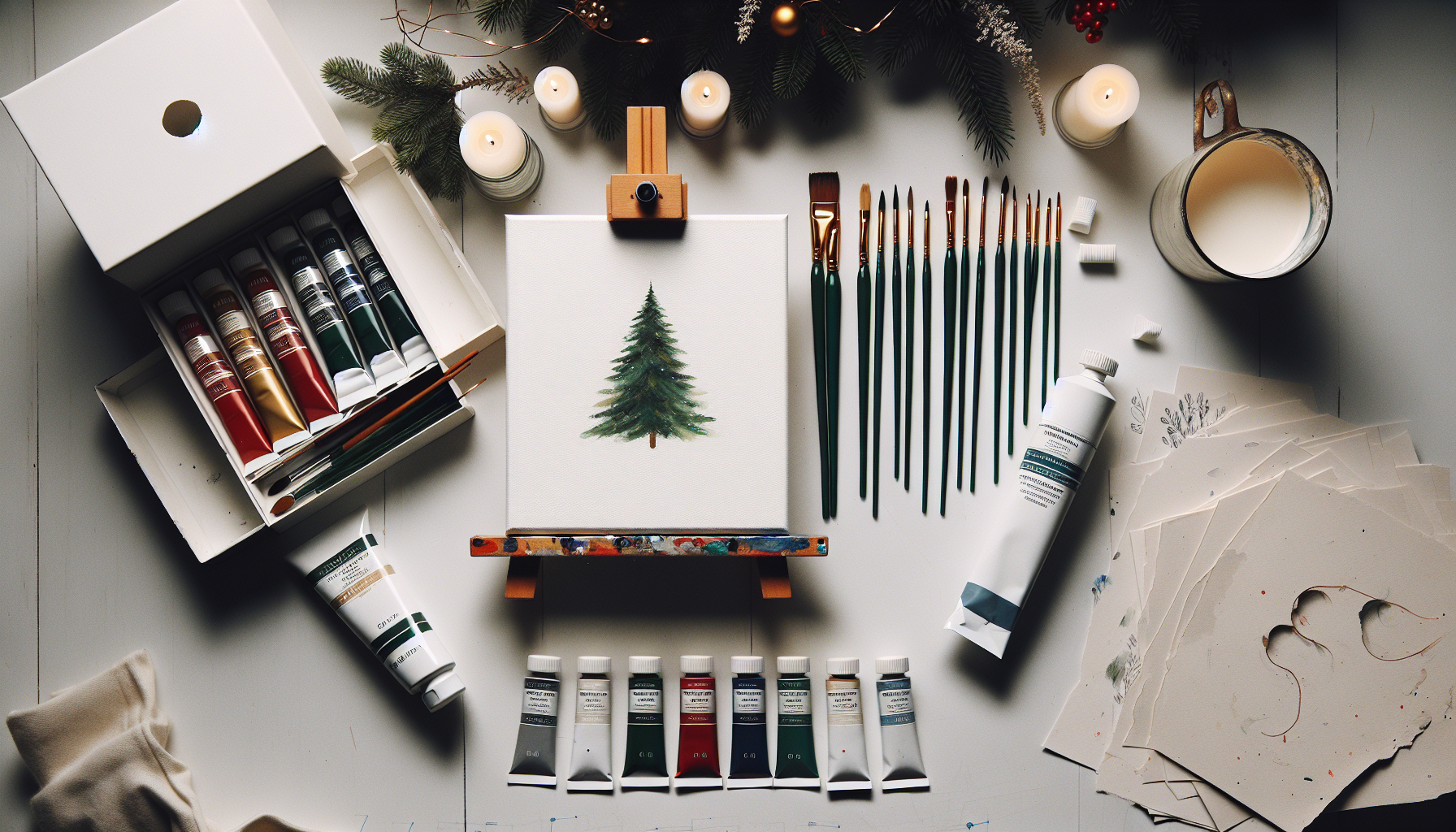Acrylic paint is a popular choice for artists due to its versatility and vibrant colors. However, have you ever wondered if acrylic paint can freeze? In this article, we will explore the freezing point of acrylic paint and whether it can withstand cold temperatures. Whether you’re a professional painter or just starting out, understanding how temperature affects acrylic paint is essential for preserving its quality and ensuring successful artwork. So, let’s dive into the fascinating world of acrylic paint freezing!
Does Acrylic Paint Freeze
Acrylic paint is a versatile and popular medium used by artists for its vibrant colors, quick drying time, and durability. However, if you live in an area with extreme winter temperatures or need to store your acrylic paint for long periods, you may have wondered if it is susceptible to freezing. In this article, we will explore the freezing point of acrylic paint, the effects of freezing on its quality, and provide tips on how to prevent and thaw frozen acrylic paint.
Understanding Acrylic Paint
Before delving into the freezing point of acrylic paint, it’s essential to understand the composition and characteristics of this medium. Acrylic paint consists of pigments suspended in an acrylic polymer emulsion, which acts as the binder and provides adhesion to various surfaces. It is known for its water-resistant, flexible nature, and ability to retain its color over time.
Acrylic paint offers artists a range of possibilities due to its fast drying time, enabling layering and blending techniques. It can be used on various surfaces, such as canvas, paper, wood, or even fabric. Additionally, acrylic paint can be thinned with water or mediums to create transparent washes or thickened with gels and pastes for impasto effects.

The Freezing Point of Acrylic Paint
Understanding the freezing point of acrylic paint is crucial in determining its ability to withstand cold temperatures without significant changes in its properties. Generally, substances freeze when their temperature reaches their freezing point, causing them to solidify.
Water is one of the primary components in acrylic paint, and its freezing point directly impacts the paint’s overall freezing point. Pure water freezes at 32°F (0°C). However, the addition of acrylic polymers and other additives in the paint alters its freezing point.
Effects of Freezing on Acrylic Paint
While many artists may be concerned about the effects of freezing on acrylic paint, it is important to note that acrylic paint has a certain degree of tolerance to freezing. However, repeated freezing and thawing cycles or long exposure to extremely low temperatures can potentially impact its quality.
Physical Changes in Frozen Acrylic Paint
When acrylic paint freezes, it undergoes physical changes. The water in the paint forms ice crystals, causing the paint to expand. This expansion can lead to the separation of components, changes in consistency, and potential cracking or flaking when thawed.
Separation of Components
During the freezing process, the water and acrylic polymer in the paint may separate, resulting in a watery layer and a thicker layer upon thawing. This separation can affect the paint’s consistency and make it challenging to remix into a homogenous mixture.
Loss of Consistency and Texture
Frozen acrylic paint may lose its original consistency and texture. The expansion of water within the paint can cause it to become clumpy or grainy when thawed, resulting in an uneven application and compromising the desired look of the artwork.
Potential Cracking or Flaking
If acrylic paint experiences severe freezing, it can lead to cracking or flaking when it dries. This occurs due to the expansion and contraction of the paint’s components during the freezing and thawing process, causing structural instability and compromising the paint film’s integrity.

Freezing Acrylic Paint in Tubes
Artists often store their acrylic paint in tubes, making it convenient for easy application and preservation. However, freezing acrylic paint in tubes can present unique challenges that need to be considered.
Issues with Freezing Acrylic Paint Tubes
Freezing acrylic paint in tubes can potentially damage the tubes themselves. When water-based substances freeze, they expand, and the pressure exerted by the expanding ice can cause the tubes to burst or become distorted.
Risk of Tube Damage
If the tubes burst or become damaged due to freezing, it can result in paint loss and potential mess. Additionally, damaged tubes may not seal tightly, leading to the paint drying out or being exposed to air, which can affect its quality.
Impact on Paint Quality
Frozen acrylic paint tubes may experience changes in their consistency and texture. The expansion of water within the tubes can cause the paint to become clumpy or separate upon thawing. It is important to assess the quality of the paint before using it to ensure it still meets your desired standards.
Proper Storage Techniques
To prevent potential issues with freezing acrylic paint tubes, it is important to store them properly. Ensure the tubes are tightly sealed to minimize the risk of air exposure and store them in a cool, dry place away from extreme cold temperatures. Additionally, consider using suitable protective measures, such as placing the tubes in an airtight container or wrapping them in a cloth or towel to provide insulation.
Freezing Acrylic Paint in Jars or Bottles
While tubes are a common method of storing acrylic paint, some artists prefer to store their paint in jars or bottles, especially if they have larger quantities. Freezing acrylic paint in jars or bottles comes with its own set of considerations.
Challenges of Freezing Acrylic Paint in Jars or Bottles
When freezing acrylic paint in jars or bottles, one must be aware of the challenges that arise due to the presence of air space and potential expansion of frozen paint.
Expansion of Frozen Paint
Unlike tubes, jars or bottles may have more air space. When the paint freezes, the expansion of water can cause the paint to push against the lid or the sides of the container. This expansion can potentially lead to leakage or damage to the container.
Potential Contamination
Storing acrylic paint in jars or bottles makes it easier for air and contaminants to come into contact with the paint. Any exposure to air, moisture, or foreign materials can affect the paint’s quality and lead to issues when thawed.
Safe Storage Methods
To safeguard against potential complications when freezing acrylic paint in jars or bottles, consider minimizing the air space within the container. This can be achieved by transferring the paint to a smaller container or filling any remaining air space with an inert gas, like nitrogen. Additionally, ensure the jars or bottles are tightly sealed to prevent air or moisture exposure.

Preventing Freezing of Acrylic Paint
As an artist, it is crucial to take preventive measures to avoid freezing your acrylic paint, as repeated freezing and thawing can compromise its quality.
Temperature Control
Maintaining a controlled environment for storing your acrylic paint is paramount. Ideally, the temperature should remain within the manufacturer’s recommended range, typically between 40°F to 75°F (4°C to 24°C). Fluctuations in temperature can increase the likelihood of freezing and impact the paint’s consistency.
Avoiding Extreme Cold Conditions
Avoid subjecting your acrylic paint to extreme cold conditions, such as leaving it in an unheated space during the winter or exposing it to freezing temperatures for an extended period. Sudden drastic temperature changes can be detrimental to the paint’s quality.
Insulation and Protection
If you live in an area with severe winters or need to store your acrylic paint in a location with low temperatures, consider insulating the storage area. This can be achieved by using insulated containers, placing the paint in wooden boxes lined with insulation, or storing them inside sealed plastic bags to provide added protection.
Choosing Suitable Storage Area
Select a storage area that remains relatively stable in temperature and humidity. Avoid areas prone to moisture, direct sunlight, or extreme temperature fluctuations, such as basements, attics, or near heating sources. A cool, dry room with consistent temperature and low humidity is ideal for preserving the quality of your acrylic paint.
Thawing Frozen Acrylic Paint
If you find yourself with frozen acrylic paint, it is possible to thaw it and assess its quality before use. However, it is important to proceed with caution to ensure the paint retains its desired performance.
Gradual Thawing Process
To thaw frozen acrylic paint, it is best to allow it to defrost gradually at room temperature. Avoid using any external heat sources, such as microwaves or heaters, as rapid thawing can further alter the paint’s properties and compromise its quality.
Room Temperature Thawing
Place the frozen acrylic paint in a temperature-controlled room and allow it to thaw naturally. It may take several hours or even days, depending on the quantity and thickness of the paint.
Avoiding Heat Sources
Refrain from using heat sources to speed up the thawing process, as this can cause the paint to overheat and potentially affect its texture and consistency. Excessive heat can also lead to the separation of components or create lumps in the paint.
Stirring or Mixing Thawed Paint
Once the acrylic paint has thawed completely, gently stir or mix the paint to recombine the components. Use a palette knife or a stir stick to ensure the paint achieves a smooth, consistent texture. Avoid vigorous stirring to minimize the risk of introducing air bubbles or clumping.

Checking the Quality of Thawed Acrylic Paint
After thawing your acrylic paint, it is crucial to assess its quality before using it in your artwork. Here are some steps you can take to determine if the paint is suitable for your intended purposes.
Visual Examination
Inspect the thawed acrylic paint visually for any significant changes in its appearance. Look for any discoloration, mold, or unusual particles that may have developed during the freezing or thawing process. If you notice any abnormalities, it is advisable to discard the paint.
Texture and Consistency Assessment
Check the texture and consistency of the thawed acrylic paint. It should ideally retain its original qualities, such as a smooth, creamy consistency. Avoid using the paint if it appears lumpy, clumpy, or separated, as it may not perform as desired on your chosen surface.
Performing Swatch Tests
Before using the thawed acrylic paint on your primary artwork, consider performing swatch tests on a small surface or spare canvas. Apply the paint using various techniques and observe how it behaves. Pay attention to its adhesion, coverage, and drying time. If the results are unsatisfactory or differ significantly from your expectations, it may be necessary to discard or modify the paint.
Modifying or Discarding Thawed Paint
If the thawed acrylic paint does not meet your desired quality standards, there are options to salvage or modify it. You can add acrylic mediums, such as flow improvers or retarders, to adjust the consistency and workability of the paint. However, if the paint exhibits severe degradation, mold growth, or unpleasant odors, it is recommended to safely dispose of it and use fresh paint for your artwork.
Conclusion
Proper storage and understanding the freezing point of acrylic paint are essential for artists who want to preserve the quality and performance of their materials. While acrylic paint does have a degree of tolerance to freezing, it is important to avoid subjecting it to extreme cold conditions for extended periods. By following the suggested preventive measures, carefully thawing frozen paint, and assessing its quality, you can continue to create vibrant and long-lasting artwork with your acrylic paint.




